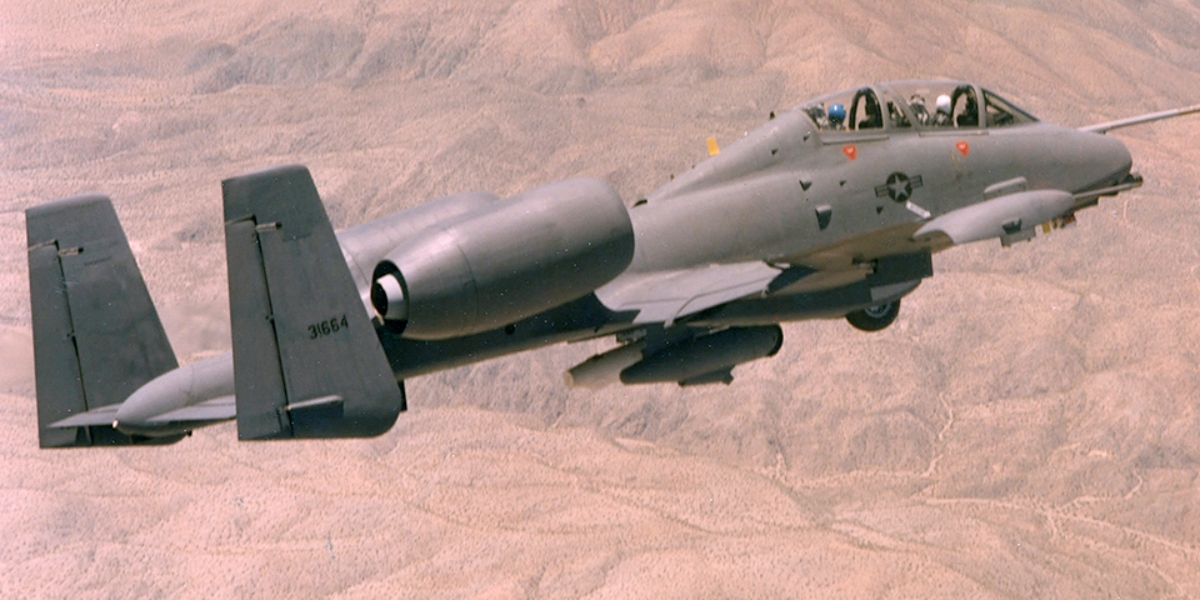In the early 1980s, the Night/Adverse Weather A-10 was renamed the YA-10B
In the 1970s, the A-10 Thunderbolt II, popularly referred to as the Warthog was developed to offer close air support to ground forces. The GAU-8/A Avenger, a seven-barrel Gatling gun with a maximum rate of fire of 4,200 rounds per minute, is its most notable feature. In numerous battles, such as the Gulf War, Operation Enduring Freedom, and Operation Iraqi Freedom, the A-10 has shown to be a very successful weapon. In non-combat situations like disaster relief and humanitarian help, it has also been employed.
The A-10 N/AW was not the first effort to develop an A-10 with two seats. A twin-fuselage A-10 was proposed by Republic Aviation (later acquired by Fairchild) in the middle of the 1970s, but the concept was ultimately dropped. There were more A-10 N/AW variants created in addition to this one. The A-10C, an updated variant of the A-10A with contemporary avionics and weapon systems, was also available in addition to the YA-10B.
Attempts to have the A-10 retired from service have been made, despite its popularity. Some believe that it is too specialized and unsuited to modern combat, while others assert that other aircraft, such as the F-35 Joint Strike Fighter, can do its function. However, there are currently no plans to retire the A-10, which is still in use by the US Air Force and several other nations. In order to increase the A-10’s lifespan, the Air Force has actually revealed plans to modernize its avionics, engines, and other components.
The first preproduction A-10A (S/N 73-1664) was delivered back to the Republic factory in March 1979 to be transformed into a prototype two-place A-10 variant. After around three months of work, the modifications were finished, and the aircraft’s designation was changed to Night/Adverse Weather A-10. The A-10 N/AW was created to fly at night and in weather conditions that were inappropriate for the A-10A, according to the National Museum of the United States Air Force.

In order to accommodate a second cockpit with dual controls for the electronic warfare officer, the forward airframe had to be rebuilt. The clamshell-style canopy was replaced with a side-opening model that was divided into two cockpits by an “A-frame” design. ACES-II type ejection seats of the “thru-the-canopy” design were fitted to the A-10 N/AW. To accommodate more avionics parts, a sizable cockpit fairing was constructed. Upgrades were made to the Head-Up Display system. A Low Light Level Television was also included, along with a Forward Looking InfraRed system. A terrain-following radar, an inertial navigation system, a radar altimeter, and an electronic moving map display were among the extra parts included to enable the night/unfavorable weather mission.
An outside pod situated on pylon 6 (the center fuselage station) housed the FLIR and laser ranger. The external pod that the terrain-following radar was housed in was in this case suspended from station four (center wing closest to the left main landing gear). The Pave Penny pod was superseded by the LLLTV. An additional 20 inches were added to the top of the rebuilt vertical stabilizers. The aircraft kept its GAU-8/A 30mm Gatling Gun, although it had a smaller drum that could only hold 750 rounds of ammo.

On October 23, 1979, the Air Force Flight Test Center at Edwards Air Force Base, California, commenced the flight testing of the A-10 N/AW, serial number 73-1664. The aircraft was flown for a total of 48.6 hours across 28 missions during the Air Force Preliminary Flight Evaluation, which came to an end on December 4, 1979. Three-quarters of the missions were carried out at night. Despite the A-10 N/AW test program’s effectiveness, it was canceled due to improvements in night attack equipment (i.e. LANTIRN). Early in the 1980s, the YA-10B was designated as the A-10 N/AW.
In addition to the A-10 N/AW, the USAF looked into considering converting a small number of A-10As into two-place trainer aircraft. Although the program was abandoned before any aircraft were converted, these trainers were supposed to be given the A-10B designation.
Photo by U.S. Air Force
